Memorite is a learning tool that is a direct result of years of frustration. I’ve designed it for myself though I am long past my college years. Yes, you need efficient learning tools when you are in school or college, but you need them even more later in life because as we all know school is about grades and life is about knowledge. “I am still learning”, Michelangelo said at the age of 87. I had always been an A student, but one day I realized that it was not enough, I realized that knowledge gained when preparing for tests had an expiration date. Couple of months after the test, I wouldn’t be able to get a good grade and a year later I would hardly remember anything. This is how our memory works. When we prepare for a test, information is stored in the area of the brain responsible for the short-term memory and stays there long enough for us to pass the test, but to remember for a substantial time period, we need to move information into the long-term memory of the brain and that does not happen without an effort. “Learning is deeper and more durable when it’s effortful. Learning that’s easy is like writing in sand, here today and gone tomorrow,” – Peter C Brown.
Once I realized that I am losing knowledge with time, I began looking for techniques that would help me remember. The most straightforward way to restore knowledge is to review information you once learned. Here comes the first problem though. You may not have the book or books anymore. Even if you have the books with bookmarks and highlights, those highlights are not searchable for paper books, or searchable for no more than one digital book, so you can’t quickly extract the information you need. It became clear to me that I needed to save highlights in a searchable and editable database.
There are plenty of good note taking applications that support notes searching and editing. But they are not designed for fast note taking. You either type the notes or you copy and paste highlights you made in digital books. For paper books you need to take a picture of a page, and then edit it to extract information you need. No matter which approach you use, it is a slow and tedious process. Often we just don’t have the time, like when we are preparing for a test for example. Even when time is not an issue, slow learning progress is a huge demotivator. I was never able to finish any sizable book using this way of making notes. I needed a system that would make notes from highlights automatically in real-time for paper and digital books alike.
To move knowledge into the long-term memory it should first appear in the short-term memory. And that too requires an effort. We need to make our brain work. Reading through the notes even when they are in a database doesn’t count for an effort, and that’s pretty much all you can do with highlights. I thought flashcards could help as they engage your mind to remember, and flashcards used to work reasonably well for me. But making flashcards manually is prohibitively slow. I needed a learning system that would make flashcards automatically from the notes.
The requirements in red font above were necessary for my ideal learning system, but they were not sufficient. They might have been good enough for getting good grades in high school or college, but definitely were not enough for becoming a skillful professional. “Don’t let school get in the way of your education” – Mark Twain. You need something that will help you keep what you learned in memory. I researched many techniques that claimed to do just that. The most popular one is called Spaced Repetition, a technique where you review information with increasing time intervals. The are a number of tools that implement this method of learning, Anki is my favorite. I tried using it, and can tell that it really works. I So my ideal learning system should support Spaced Repetition learning.
Spaced Repetition works well in many situations, but there are plenty of cases where it is not up to the task. If you are preparing for a test you don’t have time to review information with increasing time intervals. In this day and age of rapid dynamic changes you may need to learn new technologies pretty often. You don’t necessarily have time to learn everything before applying your knowledge, you may need to learn and apply the knowledge at the same time. This is where Spaced Repetition fails. To be able to learn and apply at the same time I needed a system supporting learning on a need to use basis. Such a system creates certain requirements for a notes database. In a typical notes application, notes could be sorted by title or creation date. It is good for travel notes or culinary recipes. You could’ve been updating your notebook more than once, and you want your notes to be at the specific location in the notebook. I needed notes stored in logical order, and I needed to be able to change notes order if necessary. If with Spaced Repetition you review the notes in 1, 3, 7, 14, 30 days, I wanted to be able to review the notes when I needed to use information contained in them. It works like a smart filter: information you use often you review often, it ends up in your long-term memory quickly, information you use rarely, you may need to review more times, and you don’t spend time on something you never use.
There was still one problem that bothered me for a long time. Notes have different difficulty, it takes less time to learn simple notes. When you are reviewing a set of notes you don’t want to spend time on the information you already learned. I needed a learning system that would hide notes containing already learned information.
I combined all the requirements (in red font) together and Memorite was born.
Igor Reyzin

